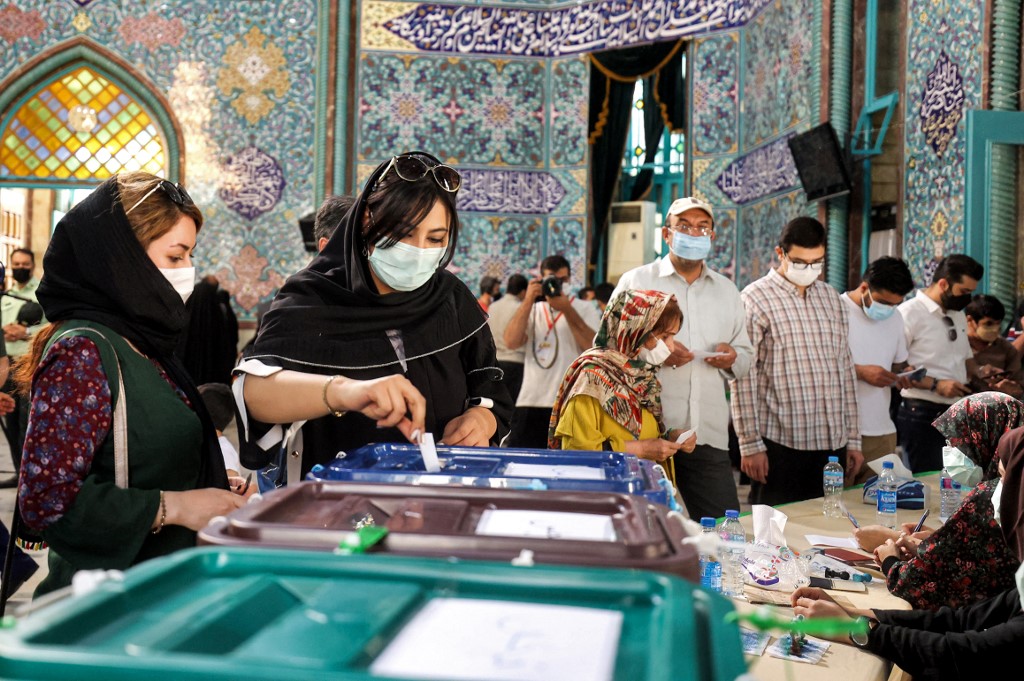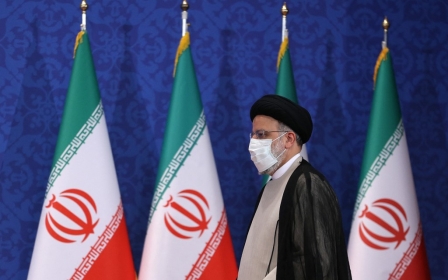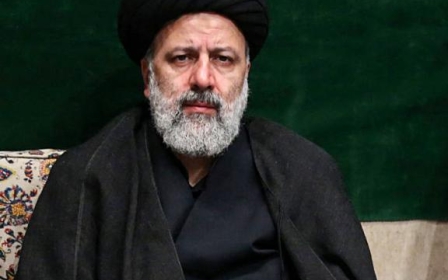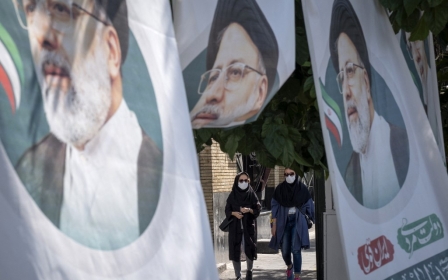Iran: The system may bend, but will not break anytime soon

Some conservatives in Iran maintain that “hidden forces” manage and guide the country. By zooming out and looking at the situation in Iran, one may wonder whether they are right - because every aspect of life seems to be spiralling out of control, while still, life goes on.
According to official statistics, which many economists inside Iran believe do not reflect reality, the 43 percent inflation rate in June broke a 26-year record, and is the second-highest in the history of the Islamic Republic. Meanwhile, according to the state-run daily Hamshahri, 40 percent of the population - more than 32 million people - live below the poverty line.
The election was a testament to the fact that a clear majority of people do not believe the ballot box can bring any real change to the current flawed system
Vaccination continues to lag, while fears grow of a fifth Covid-19 wave as the Delta variant spreads. Earlier this month, the government ordered the closure of all non-essential businesses in 275 cities, including Tehran, with the shutdown affecting public parks, restaurants, malls, movie theatres and bookstores. The provincial prosecutor of Sistan and Baluchistan province warned on 30 June that a “tsunami of death” was approaching.
At the same time, electricity blackouts have sparked protests in several cities. Power consumption this summer has topped 60,000 megawatts a day, while the country’s stated electricity generation capacity is around 54,000 megawatts. Subsidised electricity rates have also made Iran a magnet for cryptocurrency mining by massive computer farms, deepening the crisis.
Plummeting voter turnout
Meanwhile, talks in Vienna between the Iranian government and world powers over reviving the 2015 nuclear deal appear to have stalled. The last major development was on 23 June, when Mahmoud Vaezi, President Hassan Rouhani’s chief of staff, remarked: “About 1,040 Trump-era sanctions will be lifted under the agreement. It was also agreed to lift some sanctions on individuals and members of the supreme leader’s inner circle.”
The sanctions, aimed at Supreme Leader Ayatollah Ali Khamenei and his office, were part of a 2019 executive order issued by former US President Donald Trump, and they have been a sticking point during the Vienna negotiations. In response to Vaezi’s remarks, Washington was quick to respond that “nothing is agreed until everything is agreed”. On 14 July, Reuters reported that according to a diplomatic source who spoke on condition of anonymity, Iran has decided not to resume negotiations until mid-August when Iranian President-elect Ebrahim Raisi's administration is in place.
According to some reports, Iran has demanded a lifting of sanctions imposed on the Revolutionary Guard, along with the group’s removal from the Foreign Terrorist Organizations list - which would be extremely hard, if not impossible, for the Biden administration to concede.
Iran’s June presidential election was a quasi-referendum. The outcome was a clear message to the system that people are turning their backs on the ballot box. Elections in Iran have previously appeared as a mechanism for the populace to impose their will against the establishment's. For instance, against all predictions, two moderates - Mohammad Khatami in 1997 and Rouhani in 2013 - have been elected in landslide victories.
Official turnout in the June vote was 48.8 percent, the lowest ever registered in the Islamic Republic since its inception in 1979. Tehran, the capital, demonstrated the largest concentration of dissent: only 26 percent of eligible voters decided to participate. By comparison, the general voter turnouts in 2013 and 2017 were about 73 percent, while in 2009, nearly 85 percent voted.
Slippery slope?
Mohammad Khatami, the spiritual leader of the Iranian reform movement, did not support any candidate, but he did vote. In a letter last month, he called for “responsibility to the motherland and people in these sensitive times” as an endorsement of voting.
Behzad Nabavi, head of the Reform Front of Iran, urged people to vote for Abdolnaser Hemmati, as reformists organised a huge campaign on social media. The outcome of all these efforts was an embarrassing defeat and no more than 2.4 million votes for Hemmati. Some analysts view this as an end to the reform movement as it previously existed - ie, as an opposition movement believing in “reform in peace and from within”, after 25 years of the movement playing an active role in Iranian politics.
All in all, the election was a testament to the fact that a clear majority of people do not believe the ballot box can bring any real change to the current flawed system.
Putting all of the above predicaments into perspective, many Iranian political activists on social media have argued that the system is on a slippery slope and will collapse sooner rather than later. But will it? There are three major reasons why the system may bend, but not break anytime soon.
The first is repression. Police and the military-security apparatus, whose members are carefully selected through a complicated screening process, are highly motivated to defend their identity and interests. Reactions to the 2009, 2017-2018 and 2019 protests leave little doubt that the system will stop at virtually nothing to remain in power. Repression, intimidation and harsh sentences, including executions of those who rise up, have been used to quash protests.
But the shah’s regime, toppled by the 1979 revolution, used similar tactics, yet could not quash revolts - so there must be other factors involved in holding the system up.
Massive strain
The second reason is the lack of any popular alternative. In the last 42 years, no opposition leader or political current that has sought to overthrow the Islamic Republic, either inside or outside of Iran, has gained popularity among dissenters within Iran.
The main problem is that they have all sought to mobilise people against the government by calling for freedom and social and political liberties, concerns of the middle- and upper-middle classes. While these are important issues, that platform does not motivate the 40 percent of the population living below the poverty line. There is no leadership representing the demands of the poor; no strong leader to galvanise them and provide direction.
The system is undoubtedly under massive strain, and there is a strong likelihood of further upheaval
The third reason relates to grassroots supporters. No transparent polling is available to provide accurate figures of those who oppose the system and those who support it. But based on the results of different presidential elections, it could be argued that between 15 and 20 million people support the system. These social forces are present at all levels of society, from governmental offices, to schools, to universities, to industrial complexes.
In the case of any upheaval against the system, they - especially the youth vigilante groups - counter protesters by using force, as well as large demonstrations. They are obviously supported by the security apparatus, Revolutionary Guard and police.
The system is undoubtedly under massive strain, and there is a strong likelihood of further upheaval. But the system can stay in power for the foreseeable future - at least until the emergence of a “movement of the poor” with a popular leadership.
The views expressed in this article belong to the author and do not necessarily reflect the editorial policy of Middle East Eye.
Middle East Eye propose une couverture et une analyse indépendantes et incomparables du Moyen-Orient, de l’Afrique du Nord et d’autres régions du monde. Pour en savoir plus sur la reprise de ce contenu et les frais qui s’appliquent, veuillez remplir ce formulaire [en anglais]. Pour en savoir plus sur MEE, cliquez ici [en anglais].







